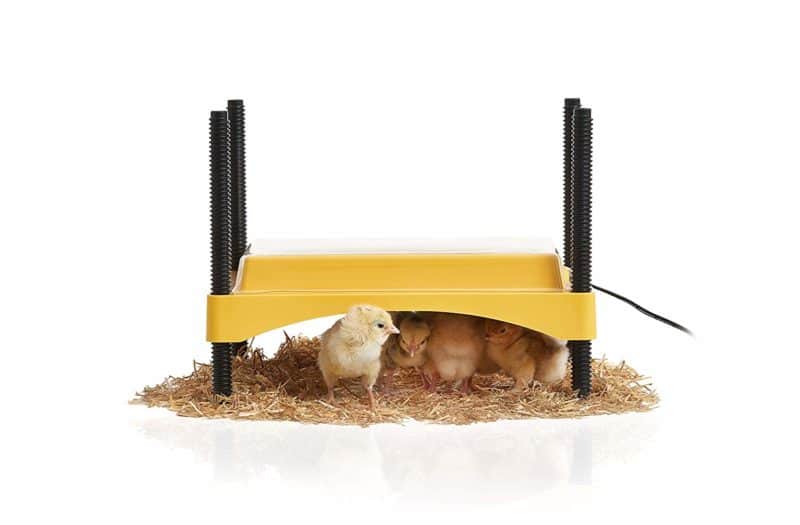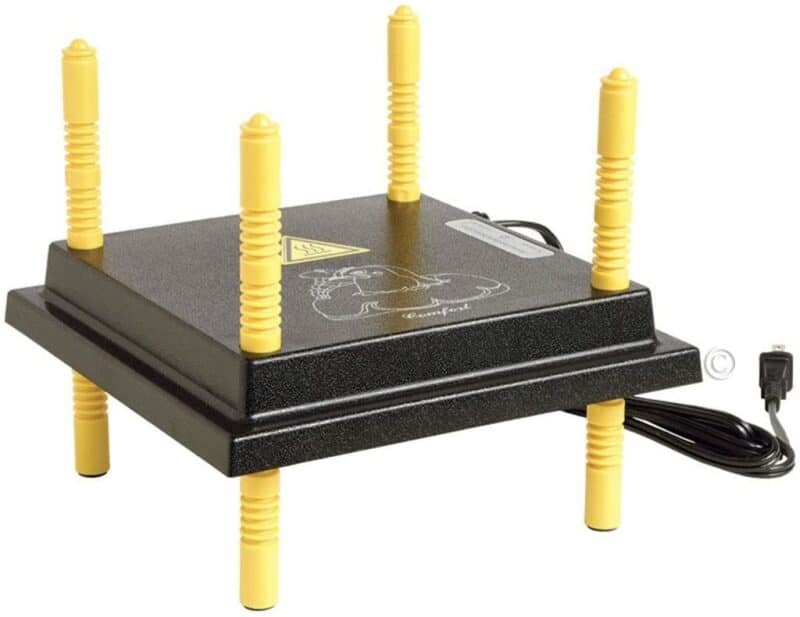
It may also lay prostrate.ĭo not confuse this with sleeping. It will try to huddle with its mates, often standing with its eyes almost shut, cheeping loudly.Ī chick which is too hot will pant and often press itself in the far corners of the brooder space. Chick behaviour should always be the guide.Ī cold chick will not seek food and may starve itself. It’s important to wean chicks off warmer temperatures gradually, by either lifting the heat source higher or turning it off for periods on warm days. At 14 days, chicks need it be around 27-29☌ at the warmest point, down to around 19☌ at 35 days.

The temperature should be progressively reduced every three to four days. Heavy breed meat chicks do better with a temperature of 28-30☌ to start, otherwise they just sit around and sleep and do not eat. Some black-downed breeds like Australorps also prefer higher brooding temperatures than yellow-downed chicks. It can be 25☌ in the coolest part of the brooder area.įor commercial hybrids (Hylines and Shavers), the recommended starting temperature is 35☌ for the first three days at the heat source, and 28-29☌ in the coolest part. Ideally, a starting temperature should be at least 30☌ at chick level.

You also need to be able to reduce the temperature so you can wean them off heat over a period of time.īut what is the ideal temperature? Some breeds and strains of poultry require different temperatures for them to be comfortable.
#Chick heating pad system how to#
Once you decide on a heat source, you need to work out how to give chicks the option to get warmer or cooler. Get the temperature rightĬhicks in a brooder will need heat for at least 4-5 weeks. Sprinkle starter feed onto it and encourage pecking by tapping your finger amongst the crumbs. Newspaper is a good standby, if you use it in thick layers and remove wet/dirty layers frequently.Ī sheet of newspaper is useful on day one.

Chicks may eat it and it can cause a digestive blockage. Pine wood shavings is good as it is absorbent. A large glass fish tank or plastic bin can suffice at the start, but a larger, purpose-built area is better.įor flooring, use a surface that is not slippery which can cause splay legs. However they do need space to get away from the heat source to cool off at times. The brooder itself needs to be a confined space to start with so chicks cannot get out or lost. These sit in the brooder and chicks can sit under or around it when they need to, as they would with a mother hen. There are also ones that are like a plate on adjustable legs. There are various ceramic heaters specifically for brooders which don’t emit light but will still fit into a light fitting. It needs to provide sufficient heat for at least four weeks and be easily adjustable, so you can increase or reduce the temperature as required. If you are rearing chicks yourself, you will need a heat source that is safe for both you and them. They need a heat source for when they are cold and the option to move away from it when they get too hot. Young chicks cannot control their body temperature.

Move her – if possible, well before her eggs hatch – into a separate run or a secure coop. Have a brooder ready before your chicks arriveĮven if you have a hen hatching out chicks in a nest, you still need somewhere safe to keep the family while they learn to cope with growing up. There’s less chance things will go wrong, and the higher the likelihood you’ll successfully raise healthy birds to adulthood. But if you are doing it yourself, it makes a big difference if you are well prepared. If you rear chicks under a broody hen, many of these issues are taken care of naturally.


 0 kommentar(er)
0 kommentar(er)
